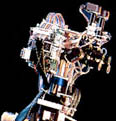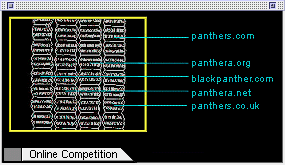
 Introduction
Introduction
Phagamys orthodon
Mus musculus muralis
Hypnomys morpheus
Hypnomys mahonensis
Thyrrhenicola hanceni
Pitymys bavaricus
Mammothus primigenius
Equus hemionus anatoliensis
Equus ferus silverstris
Prolagus sardus
Prolagus corcianus
Nesiotites similis
Nesiotites corsicanus
Panthera tigris virgaes
Panthera pardus tulliana
Panthera leo europaea
Felis lynx sardiniae
Sinotherium sardus
Canis lupus minor
Canis lupus deiesnus
Hippopoesmus sp.nov
Mecodema punctellum
Candibrervus ropalophorus
Candibrervus rethymnensis
Myotragus balearicus
Capra pyrenaica pyrenaica
Capra pyrenaica lusiesnica
Anthicus antiochensis
Aplothorax bunrchelli
Atelothrus transiens
Blackburnia insignis
Chaetotrechiana kiuchii
Disenochus micantipennis
Ishikawatrechus intermedius
Rangifer esrandus


Introduction
The relationship between online creativity and offline ecology are at play in this Internet artwork by Transnational Temps. NOVUS.EXTINCTUS begins with the observation that while thousands of domain names are registered each year for new Web sites, simultaneously thousands of species are falling into extinction. This juxtaposition of creation and extinction challenges simplistic notions of technological progress, generally, and invites more specific enquiries into the promise of the Information Age. NOVUS.EXTINCTUS reframes the game-like processes of e-culture, trying to see how ‘productive’ cultural enterprises contribute to the process of extinction.

NOVUS.EXTINCTUS was inspired by search engines specializing in images. When using them to locate images of endangered animals online, one finds that images of animals are often more numerous than the animals themselves in the wild. This suggests that a remarkable inversion is taking place. Real animals and plants that formerly occupied taxonomists are disappearing, while at the same time it seems there are not enough names available to identify all of the new phenomena being created in cyberspace.
[ Next ]
 Mediated Nature
Mediated Nature